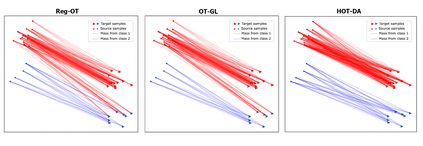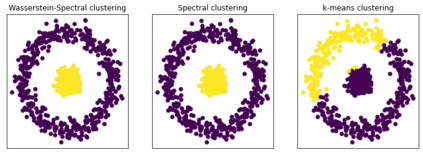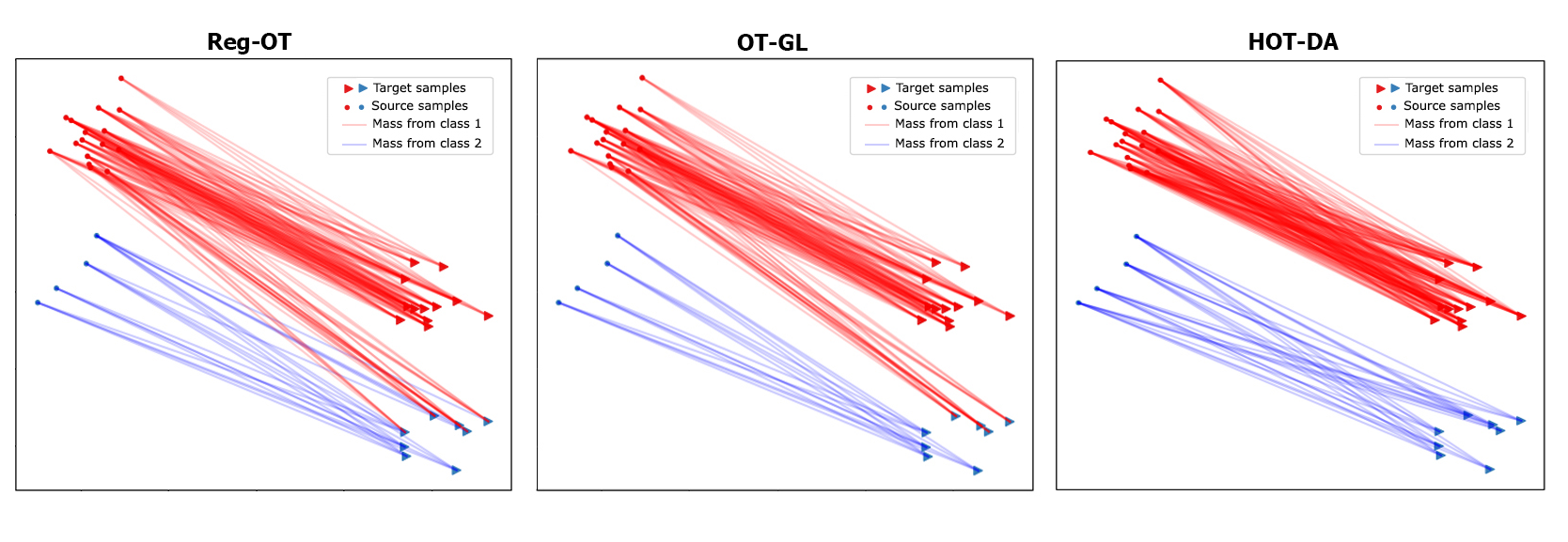In this paper, we propose a novel approach for unsupervised domain adaptation, that relates notions of optimal transport, learning probability measures and unsupervised learning. The proposed approach, HOT-DA, is based on a hierarchical formulation of optimal transport, that leverages beyond the geometrical information captured by the ground metric, richer structural information in the source and target domains. The additional information in the labeled source domain is formed instinctively by grouping samples into structures according to their class labels. While exploring hidden structures in the unlabeled target domain is reduced to the problem of learning probability measures through Wasserstein barycenter, which we prove to be equivalent to spectral clustering. Experiments on a toy dataset with controllable complexity and two challenging visual adaptation datasets show the superiority of the proposed approach over the state-of-the-art.
翻译:在本文中,我们提出了一种未受监督领域适应的新办法,该办法涉及最佳运输、学习概率措施和未受监督学习的概念。拟议办法HOT-DA基于最佳运输的分级配方,除了地面测量所收集的几何信息之外,还利用了源和目标领域较丰富的结构信息。标签来源领域的额外信息本能地形成,根据分类标签将样本分组到结构中。在探索未加标签的目标领域隐蔽结构的同时,通过瓦塞斯坦百温中心(我们证明这相当于光谱集)学习概率措施的问题也有所减少。关于具有可控复杂性的微小数据集的实验和两个具有挑战性的视觉适应数据集的实验表明,拟议办法优于最新技术。






